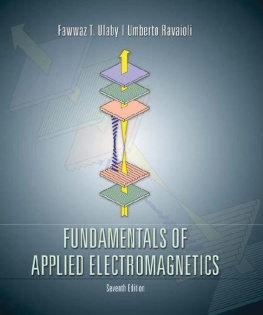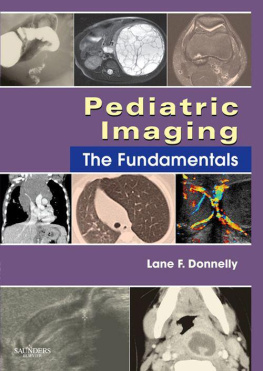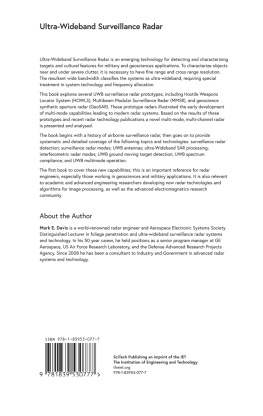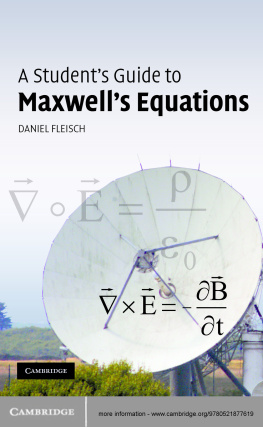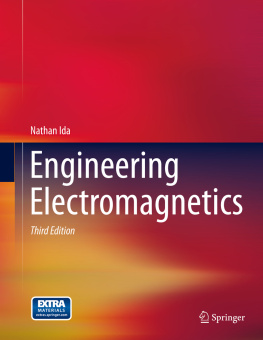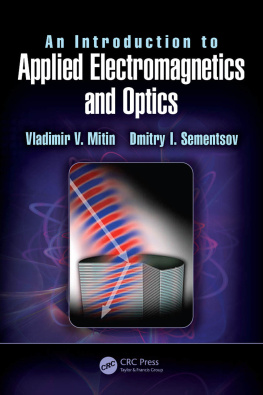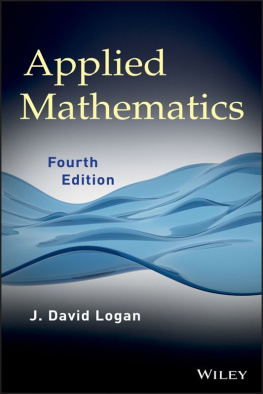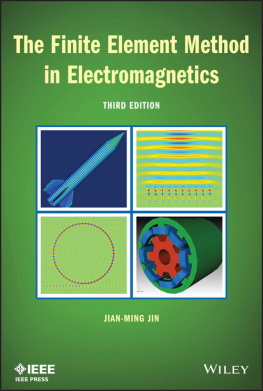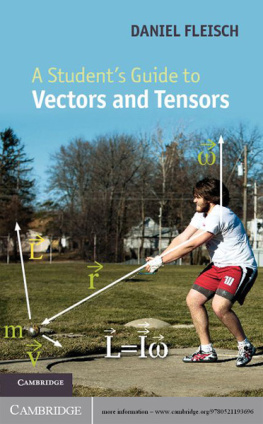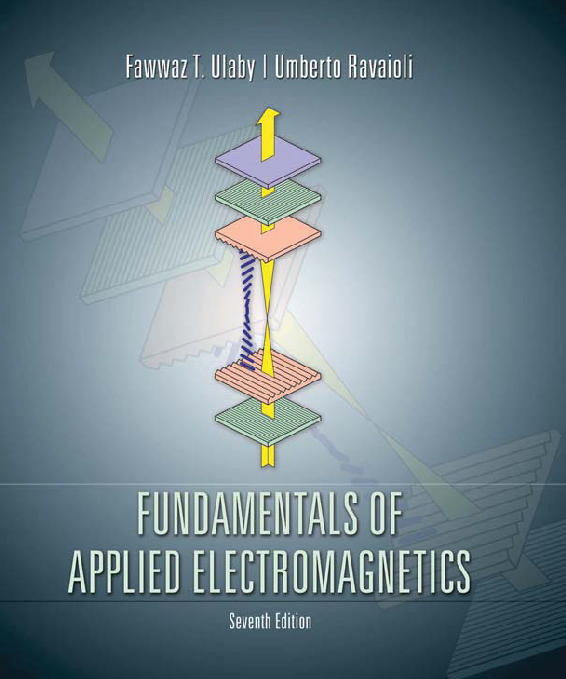
FUNDAMENTALS OFAPPLIEDELECTROMAGNETICSSeventh EditionFawwaz T. UlabyUniversity of Michigan, Ann ArborUmberto RavaioliUniversity of Illinois, UrbanaChampaignPearsonBoston Columbus Indianapolis New York San Francisco Upper Saddle River AmsterdamCape Town Dubai London Madrid Milan Munich Paris Montreal TorontoDelhi Mexico City Sau Paula Sydney Hong Kong Seoul Singapore Taipei Tokyo
Library of Congress Cataloging-in-Publication Data on FileVice President and Editorial Director, ECS:
Marcia J. HortonAcquisitions Editor:
Julie BaiEditorial Assistant:
Sandra RodriguezManaging Editor:
Scott DisannoProduction Editor:
Rose KernanArt Director:
Marta SamselArt Editor:
Gregory DullesManufacturing Manager:
Mary FischerManufacturing Buyer:
Maura Zaldivar-GarciaProduct Marketing Manager:
Bram Van KempenField Marketing Manager:
Demetrius HallMarketing Assistant:
Jon BryantCover Designer:
Black Horse Designsc2015, 2010 Pearson Education, Inc.Upper Saddle River, New Jersey 07458All rights reserved. No part of this book may be reproduced, in any form or by any means, without permission in writing from the publisher.The author and publisher of this book have used their best efforts in preparing this book. These efforts include the development, research, andtesting of theories and programs to determine their effectiveness. The author and publisher make no warranty of any kind, expressed orimplied, with regard to these programs or the documentation contained in this book. The author and publisher shall not be liable in any eventfor incidental or consequential damages with, or arising out of, the furnishing, performance, or use of these programs.Previous editions copyright c2007 by Pearson Education, Inc.Pearson Education Ltd., LondonPearson Education Australia Pty. Ltd., SydneyPearson Education Singapore, Pte. Ltd.Pearson Education North Asia Ltd., Hong KongPearson Education Canada, Inc., TorontoPearson Education de Mexico, S.A. de C.V.Pearson EducationJapan, TokyoPearson Education Malaysia, Pte. Ltd.Pearson Education, Inc., Upper Saddle River, New Jersey10 9 8 7 6 5 4 3 2 1ISBN-13:978-0-13-335681-6
www.pearsonhighered.comISBN-10:0-13-335681-7
We dedicate this book toJean and Ann Lucia.
This page intentionally left blank
Preface to Seventh EditionBuilding on the core content and style of its predecessor, thisNEW TO THIS EDITIONseventh edition (7/e) of
Applied Electromagnetics introducesnew features designed to help students develop a deeperA set of 10 additional interactive simulation modules,understanding of electromagnetic concepts and applications.bringing the total to 52Prominent among them is a set of 52 web-based simulationUpdated Technology Briefsmodules that allow the user to interactively analyze and designtransmission line circuits; generate spatial patterns of theEnhanced figures and imageselectric and magnetic fields induced by charges and currents;New/updated end-of-chapter problemsvisualize in 2-D and 3-D space how the gradient, divergence,and curl operate on spatial functions; observe the temporal andThe interactive modules and Technology Briefsspatial waveforms of plane waves propagating in lossless andcanbefoundattheStudentWebsiteonlossy media; calculate and display field distributions insidehttp://www.pearsonhighered.com/ulaby.a rectangular waveguide; and generate radiation patterns forlinear antennas and parabolic dishes.These are valuableACKNOWLEDGMENTSlearning tools; we encourage students to use them and urgeAs authors, we were blessed to have worked on this bookinstructors to incorporate them into their lecture materials andwith the best team of professionals: Richard Carnes, Lelandhomework assignments.Pierce, Janice Richards, Rose Kernan, and Paul Mailhot. We areAdditionally, by enhancing the books graphs and il-exceedingly grateful for their superb support and unwaveringlustrations, and by expanding the scope of topics of thededication to the project.Technology Briefs, additional bridges between electromagneticfundamentals and their countless engineering and scientificWe enjoyed working on this book.We hope you enjoyapplications are established. In summary:learning from it.Fawwaz T. UlabyUmberto Ravaioli
viPREFACECONTENTin Chapter 1 with reviews of complex numbers and phasoranalysis.The next part of the book, contained in Chapters 3 through 5,The book begins by building a bridge between what should becovers vector analysis, electrostatics, and magnetostatics. Thefamiliar to a third-year electrical engineering student and theelectrostatics chapter begins with Maxwells equations for theelectromagnetics (EM) material covered in the book. Prior totime-varying case, which are then specialized to electrostaticsenrolling in an EM course, a typical student will have taken oneand magnetostatics, thereby providing the student with anor more courses in circuits. He or she should be familiar withoverall framework for what is to come and showing him orcircuit analysis, Ohms law, Kirchhoffs current and voltageher why electrostatics and magnetostatics are special cases oflaws, and related topics. Transmission lines constitute a
naturalthe more general time-varying case.bridge between electric circuits and electromagnetics. WithoutChapter 6 deals with time-varying fields and sets thehaving to deal with vectors or fields, the student uses alreadystage for the material in Chapters 7 through 9. Chapter 7familiar concepts to learn about wave motion, the reflection andcovers plane-wave propagation in dielectric and conductingtransmission of power, phasors, impedance matching, and manymedia, and Chapter 8 covers reflection and transmission atof the properties of wave propagation in a guided structure. Alldiscontinuous boundaries and introduces the student to fiberof these newly learned concepts will prove invaluable later (inoptics, waveguides and resonators.Chapters 7 through 9) and will facilitate the learning of howplane waves propagate in free space and in material media.In Chapter 9, the student is introduced to the principles ofTransmission lines are covered in Chapter 2, which is precededradiation by currents flowing in wires, such as dipoles, as well as
Suggested SyllabiTwo-semester SyllabusOne-semester Syllabus6 credits (42 contact hours per semester)4 credits (56 contact hours)ChapterSectionsHoursSectionsHours1Introduction:All4All4Waves and Phasors2Transmission LinesAll122-1 to 2-8 and 2-1183Vector AnalysisAll8All84ElectrostaticsAll84-1 to 4-1065MagnetostaticsAll75-1 to 5-5 and 5-7 to 5-85Exams32Total for first semester426Maxwells EquationsAll66-1 to 6-3, and 6-63for Time-Varying Fields7Plane-wave PropagationAll77-1 to 7-4, and 7-668Wave ReflectionAll98-1 to 8-3, and 8-67and Transmission9Radiation and AntennasAll109-1 to 9-6610Satellite CommunicationAll5NoneSystems and Radar SensorsExams31Total for second semester40Total56Extra Hours20
PREFACEviito radiation by apertures, such as a horn antenna or an openingACKNOWLEDGMENTSin an opaque screen illuminated by a light source.Special thanks are due to reviewers for their valuable commentsTo give the student a taste of the wide-ranging applications ofand suggestions. They include Constantine Balanis of Arizonaelectromagnetics in todays technological society, Chapter 10State University, Harold Mott of the University of Alabama,concludes the book with overview presentations of two systemDavid Pozar of the University of Massachusetts, S. N. Prasadexamples: satellite communication systems and radar sensors.of Bradley University, Robert Bond of New Mexico Institute ofThe material in this book was written for a two-semesterTechnology, Mark Robinson of the University of Colorado atsequence of six credits, but it is possible to trim it down toColorado Springs, and Raj Mittra of the University of Illinois. Igenerate a syllabus for a one-semester four-credit course. Theappreciate the dedicated efforts of the staff at Prentice Hall andaccompanying table provides syllabi for each of these twoI am grateful for their help in shepherding this project throughoptions.the publication process in a very timely manner.MESSAGE TO THE STUDENTFawwaz T. UlabyThe web-based interactive modules of this book were developedwith you, the student, in mind. Take the time to use themin conjunction with the material in the textbook.Videoanimations can show you how fields and waves propagatein time and space, how the beam of an antenna array canbe made to scan electronically, and examples of how currentis induced in a circuit under the influence of a changingmagnetic field. The modules are a useful resource for self-study.You can find them at the Student Website link onhttp://www.pearsonhighered.com/ulaby. Use them!
Next page
